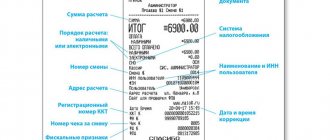What are monetary documents
Today in Russia there is no normative definition for the concept of “monetary documents”.
A unified register of monetary documents has not been developed either. Regulatory legal acts indicate only the main features and examples of such documents (see instructions approved by order of the Ministry of Finance of Russia dated December 1, 2010 No. 157n; hereinafter referred to as Instruction No. 157n). It is generally accepted that monetary documents in budget accounting are understood as objects of a certain nominal value that are purchased and stored in an institution, but services for them have not yet been provided. The most famous examples of this kind of documents are coupons for gasoline or food, postage stamps, envelopes with stamps, notices for postal orders, vouchers to sanatoriums or children's health camps, etc. These assets also include payment cards for mobile communications, IP-telephony for long-distance, international calls, Internet access, airline and railway tickets, public transport tickets, etc.
There is a category of documents that have a value, but for accounting purposes are not recognized as monetary documents. In particular, these are:
- shares that were purchased from shareholders;
- securities;
- strict reporting forms (see “Budget accounting: how to store, account for and write off BSO in a budgetary institution”);
- documents for intangible assets.
How to calculate shelf life
The period during which it is necessary to store a document must be counted from the beginning of the calendar year following the year of its creation. For example, a PKO was created on October 21, 2021, in which case it should be stored from January 1, 2021 to January 1, 2026.
This guidance applies to both paper and electronic forms.
ConsultantPlus experts analyzed how long to store documents in an organization in 2021. Use these instructions for free.
How to reflect monetary documents in accounting policies
The answer to the question of exactly which assets will be considered monetary documents must be fixed in the institution’s accounting policies. The procedure for their accounting, storage and write-off is also prescribed there. All these procedures are regulated by several instructions and orders of the Russian Ministry of Finance, a full list of which you can see below.
The main documents that regulate the work of a budgetary institution with monetary documents:
- Instructions for the application of the Unified Chart of Accounts for public authorities (state bodies), local governments, management bodies of state extra-budgetary funds, state academies of sciences, state (municipal) institutions (approved by order of the Ministry of Finance of Russia dated December 1, 2010 No. 157n);
- Instructions for the use of the Chart of Accounts for Budget Accounting (approved by order of the Ministry of Finance of Russia dated December 6, 2010 No. 162n);
- Instructions for the use of the Chart of Accounts for accounting of budgetary institutions (approved by order of the Ministry of Finance of Russia dated December 16, 2010 No. 174n);
- Instructions for the use of the Chart of Accounts for accounting of autonomous institutions (approved by order of the Ministry of Finance of Russia dated December 23, 2010 No. 183n);
- Order of the Ministry of Finance of Russia dated March 30, 2015 No. 52n “On approval of forms of primary accounting documents and accounting registers used by public authorities (state bodies), local government bodies, management bodies of state extra-budgetary funds, state (municipal) institutions, and guidelines for their application."
We have collected in a table examples of wording that can be used in an organization’s accounting policies:
| Chapter | What to write in the accounting policy |
| Organization of accounting | The list of positions of employees who have the right to receive monetary documents and funds on account for the purchase of goods (payment for work, services) is given in Appendix No.... to this Accounting Policy. The issuance of funds and monetary documents for reporting is carried out in accordance with the relevant Regulation No.... to this Accounting Policy |
| Inventory procedure | To confirm accounting data and annual financial statements, an inventory of property and financial liabilities is carried out:
|
| Accounting for financial assets | The following are taken into account as part of monetary documents (at the institution’s choice):
Monetary documents are accepted into the institution's fund office and are accounted for at actual cost. |
For each type of monetary documents, it is necessary to develop separate local regulations (LNA) - regulatory authorities are always interested in them during regular and extraordinary inspections. Each LNA should indicate the positions of employees who have the right to receive the corresponding type of monetary document, as well as the mandatory conditions and rules for its use.
A correctly drafted local regulatory act should justify the advisability of using monetary documents in a budgetary institution. To do this, you need to carefully define the algorithm by which employees will confirm their expenses.
How long should you keep cash documents?
Accounting and tax laws have different points of view on the storage periods of cash documents.
Tax legislation (subclause 8, clause 1, article 23 of the Tax Code of the Russian Federation) states that documents reflecting accounting and tax accounting data must be stored for 4 years. He established the same deadlines for documents that reflect the income and expenses of the enterprise.
The Law “On Accounting” dated December 6, 2011 No. 402-FZ states that accounting (financial) statements must be stored for at least 5 years after the end of the reporting year. This law also says that the organization must organize such conditions for storing documents under which they will remain safe and sound. She can also independently organize archives in order to store all important papers outside the place of business, thereby ensuring the safety of documentation (Clause 2 of Article 13 of Law No. 125-FZ of October 22, 2004).
The storage period for cash documents approved by Rosarkhiv is also 5 years (clause 277 of the List).
Thus, based on the maximum periods, cash documents should be kept for 5 years.
See also “What is the shelf life of a cash book?” .
There are a number of administrative penalties for violators of documentation retention periods:
- an administrative fine for officials in the amount of 5,000–10,000 rubles, and for repeated violations - from 10,000 to 20,000 rubles. or disqualification for a period of one to two years (Article 15.11 of the Administrative Code);
- administrative fine for citizens in the amount of 200-300 rubles, for officials - 300-500 rubles. (Article 13.20 of the Administrative Code).
How to store, use and write off
Since the institution has already paid, but has not yet redeemed the monetary documents, they must be kept in the cash register. These documents are reflected in the stock register if:
- purchased by bank transfer;
- purchased for cash by one person, but will be spent by another person;
- are issued to employees in parts, and the balance is kept in the cash register.
Please note: if an accountable person purchases monetary documents and immediately spends them, then they are written off according to the advance report and do not go through the cash register.
To record the receipt of monetary documents at the cash desk and their release from the cash register, you need to use incoming cash orders (form 0310001) and outgoing cash orders (form 0310002). These forms were approved by Order of the Ministry of Finance of Russia dated March 30, 2015 No. 52n (hereinafter referred to as Order No. 52n). On the orders it is necessary to make the inscription: “Stock”, and then record them in the journal for registering incoming and outgoing cash documents. These records should not overlap with those reflecting cash flows.
For the stock cash register, you should keep a separate cash book with continuous numbering and the mark “Stock” on each sheet. Entries are made to it after receipt or issuance of monetary documents for each stock order. Please note: the lines “including wages” and “total cash balance in the cash register at the end of the day” in this cash book remain blank.
Control over monetary documents in a budgetary institution is carried out as part of regular checks of the cash register. Based on the results of the audit, an inventory list (matching sheet) of strict reporting forms and monetary documents is compiled (form 0504086). The rules for filling it out are regulated by Order No. 52n.
The head of a budget institution is responsible for compliance with the requirements for the storage, use and accounting of monetary documents in a budgetary institution. It determines the procedure and timing of control activities.
Established shelf life
The required storage period for cash documents in an organization is established in the accounting law 402-FZ of December 6, 2011. According to the normative act, it is at least five years from the end of the reporting period. The same period is specified in the order of the Federal Archive No. 236 of December 20, 2021 (Article 277).
The exception is statements on which payments are made to employees. According to the list of the Federal Archive, the shelf life of settlement, payment and payroll statements is 6 years. Moreover, this period increases to 75 years if the organization does not have personal accounts for employees. The employee’s personal account is filled out in form T-54 and contains all the information about settlements with the employee, as well as deductions from payments received by him.
If stored documents are used in legal proceedings, they are stored until the end of the process.
In the event of termination of the activities of an individual entrepreneur or liquidation of a legal entity, the storage period for the cash book and cash documents does not change. The documentation remains in the archive until the specified period expires.
Subtleties of analytical accounting of monetary documents
Analytical accounting of monetary documents is differentiated by their types in the card for accounting for funds and settlements (form 0504051). This is stated in paragraph 171 of Instruction No. 157n. The card begins with records of balances at the beginning of the year. New entries are made no later than one day after the transaction. Balances are summarized at the end of each month.
All transactions with monetary documents are recorded in the journal for other transactions. The basis for each new entry must be the cashier’s report and the documents attached to it (form 0504071). Just like an accounting card, the journal is opened with balances at the beginning of the period. It reflects turnover for the entire period and displays balances.
Accounting for strict reporting forms
Strict reporting forms are not inventories, therefore, an off-balance sheet account 03 is provided for accounting - the debit of this account reflects the receipt of forms.
In the accounting policy of the institution, it is necessary to indicate at what cost the forms are accepted for accounting: either at the real cost of the purchase, or at 1 ruble per form (in practice, the second option is more often used).
The institution maintains the above-mentioned journal for other transactions (form 0504071) in off-balance sheet account 03 “Strict reporting forms”. The journal must be filed along with primary documents indicating the movement of the forms.
More on the topic: Creating a new consumable type KPS in BSU 2.0
Analytical accounting of strict reporting forms is maintained in the Book of Accounting of Strict Reporting Forms (form 0504045, approved by Order of the Ministry of Finance of Russia dated March 30, 2015 No. 52n) by type, series and number. It indicates the date of receipt or issue of forms, their quantity and cost. At the end of the reporting period, the data is analyzed and the balance is displayed. The pages of such books are numbered, and the books themselves must be laced and sealed.
Rules for accounting of monetary documents
All accounting operations for monetary documents and corresponding accounting records can be divided into two groups:
| Contents of operation | Debit | Credit |
| Receipt of cash documents | ||
| Receipt from the supplier to the cash register | 0 201 35 510 | 0 302 XX 730 |
| Spending by an accountable person or return to the cash desk of previously issued accounts | 0 201 35 510 | 0 208 XX 660 |
| Identification of surpluses during inventory | 0 201 35 510 | 0 401 10 180 |
| Disposal of monetary documents | ||
| Issue from cash register to reporting | 0 208 XX 560 | 0 201 35 610 |
| Return from the cash register to the supplier according to the terms of the contract | 0 302 XX 830 | 0 201 35 610 |
| Write-off of shortage | 0 209 82 560 | 0 201 35 610 |
| Write-off for emergency expenses (theft, damage, destruction) | 0 401 10 172 0 401 20 273 | 0 201 35 610 |
Please note: if an institution issues both cash and monetary documents to the same employees, then payments must be made in different accounts. For example, additional analytical codes can be added to the account “208 00”.
Organization of cash circulation by the Bank of Russia
The regulatory legal regulation of money circulation in the country is structured in such a way that the Central Bank of the Russian Federation has the opportunity to:
- see and analyze the development of the state and structure of cash turnover passing through bank cash desks;
- make calculations: a) the volume of cash in circulation, b) the speed of circulation of cash and its return to the cash desks of credit institutions;
- change the current limit on the balance of the working cash register as a whole for the Russian Federation.
The policy of the Bank of Russia in the field of organizing cash settlements is carried out by its territorial institutions in the constituent entities of the Russian Federation, whose tasks include, in particular, analysis and forecasting of cash turnover of credit institutions. As part of territorial institutions, cash settlement centers (RCCs) are created, which have their own: a) working cash desks, b) reserve funds.
The working cash desk of the RCC is necessary in order to put cash into circulation, as well as receive it from credit institutions. Revolving cash registers are also called cash registers, because money passes through these cash registers in both directions, they move and, therefore, are in circulation.
The reserve fund of the RCC plays the role of a repository of stocks of banknotes and coins that have not been released into circulation; its main tasks are: a) if there is a need to fuel the economy with cash; b) in connection with the deterioration of circulating banknotes, ensure that they are replaced with new banknotes; c) maintain a mandatory banknote composition of the money supply in the federation and its subjects; d) accept excess money (exceeding the limit) from the working cash register.
Thus, the circulating cash desk of the RCC is a kind of channel connecting the reserve fund of the RCC, in which cash is stored in a stationary state, with credit institutions that ensure the involvement of banknotes and coins in controlled cash circulation.
Activities of territorial institutions of the Bank of Russia in organizing cash circulation in the country
Regarding the reserve funds of the RCC:
- organize work on: a) creating reserve funds of banknotes and coins in the RCC, b) transporting valuables between them, c) determining the minimum amounts for storing reserve funds within the limits of the amounts established by the Bank of Russia for the territorial institution;
- submit proposals to the Bank of Russia to change the minimum amounts of storage of reserve funds as a whole for the territorial institution;
- keep records of banknotes and coins located in the reserve funds of the RCC for banknotes and denominations;
- ensure that they contain banknotes and coins in denominations and denominations necessary for circulation.
Regarding the cash registers of the RCC:
- submit proposals to the Bank of Russia to change the limits of working cash registers;
- organize cash services for credit institutions, and in some cases - legal entities and individuals;
- promptly regulate cash resources;
Control and related powers (some):
in relation to reserve funds and working cash:
- control the timely replenishment of reserve funds to the established storage amount;
- control a) the correct organization of issue and cash work in the RCC, b) ensuring the safety of the values of reserve funds and the working cash register, c) compliance with issue and cash discipline;
- keep records of emission transactions and control the correctness of their execution;
in relation to credit institutions:
- monitor compliance with the established procedure for conducting cash transactions in credit institutions;
- establish the amount of the minimum allowable cash balance in the operating cash desks of credit institutions at the end of the day and monitor its compliance;
regarding the quality of banknotes:
- control the quality of banknotes in circulation, organize work to carry out an examination of the solvency of banknotes at the RCC and remove dilapidated and damaged banknotes and defective coins from circulation;
- monitor compliance by credit institutions with established rules for working with counterfeit, dubious and damaged banknotes;
regarding banknote composition:
- analyze the banknote structure of the release of money into circulation by the RCC;
- control the compliance of the banknote composition of banknotes and coins in circulation with the needs of cash circulation;
- carries out measures to ensure cash circulation with banknotes and coins of appropriate denominations and denominations.
Signs of solvency of banknotes and coins of the Bank of Russia The Central Bank of the Russian Federation indicated the conditions under which its banknotes and coins are recognized as solvent.
Banknotes and coins must:
- have the force of a legal means of cash payment on the territory of the Russian Federation, even if they belong to the category of those withdrawn from circulation;
- be without signs of counterfeit;
- have no damage at all or have acceptable damage.
If any of these conditions are not met, then cash cannot be considered solvent.
Acceptable damage to Bank of Russia banknotes:
in which banknotes cannot be exchanged at face value:
- dirt, wear, tears;
- abrasions, small holes, punctures, extraneous inscriptions, stains, stamp impressions;
- loss of corners, edges;
in which banknotes are subject to exchange at face value:
- various damages, provided that the banknotes have retained at least 55% of the original area;
- glued together from any number of fragments, provided that: a) one fragment or b) several fragments that definitely belong to one banknote occupy at least 55% of the original area of the banknote;
- are composed of two fragments belonging to different banknotes of the Bank of Russia of the same denomination, and each fragment differs from its neighbor in graphic design and occupies at least 50% of the original area of the banknote;
- changes in color and glow in ultraviolet rays, but images are clearly visible on them (there is an exception);
- There is a manufacturer defect.
Acceptable damage to a Bank of Russia coin:
in which the coin cannot be exchanged at face value:
- minor mechanical damage, while the images on the obverse and reverse are completely preserved;
in which the coin is subject to exchange at face value:
- the coin is bent, flattened, sawn, with holes, traces of metal removal, provided that the images on the obverse and reverse are fully preserved;
- a coin that has been melted, etched, or changed color;
- There is a manufacturer defect.










